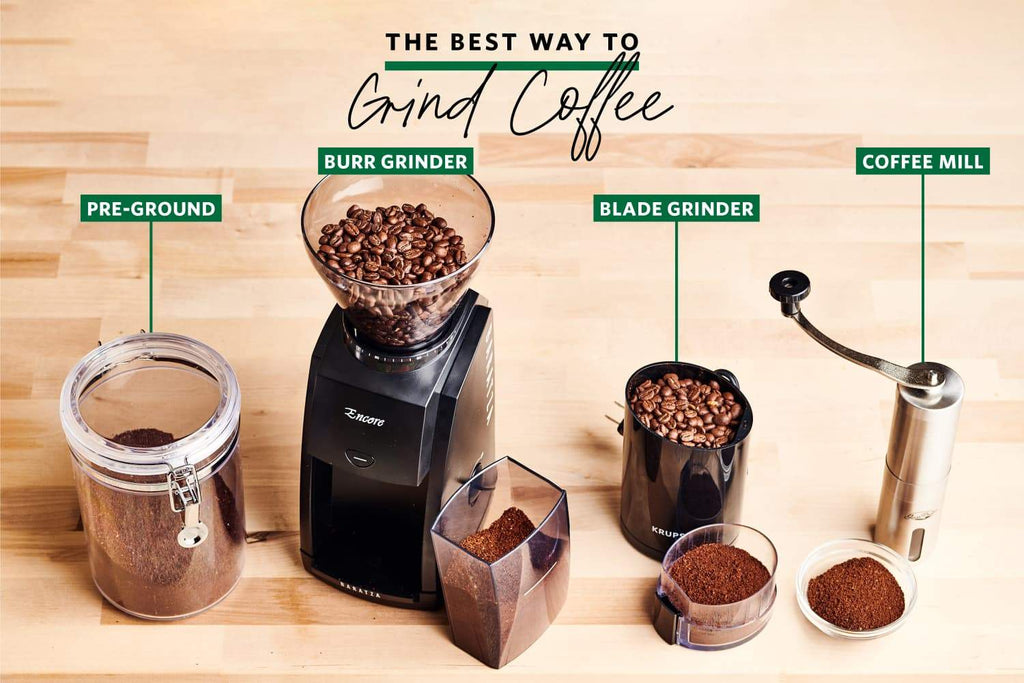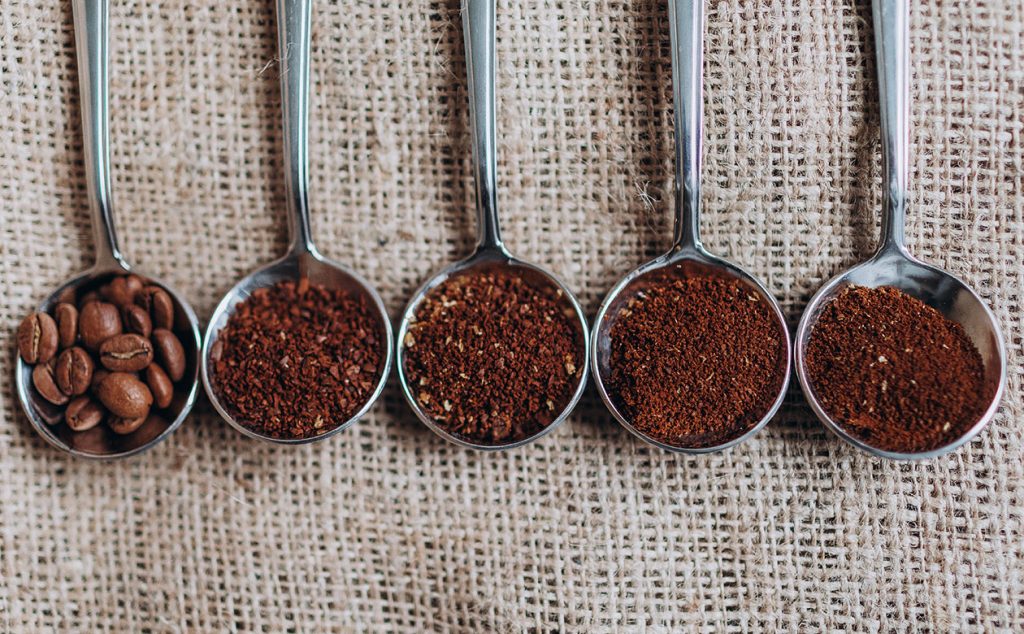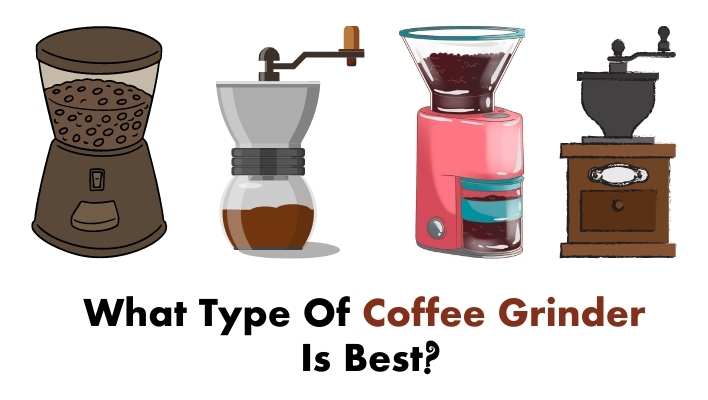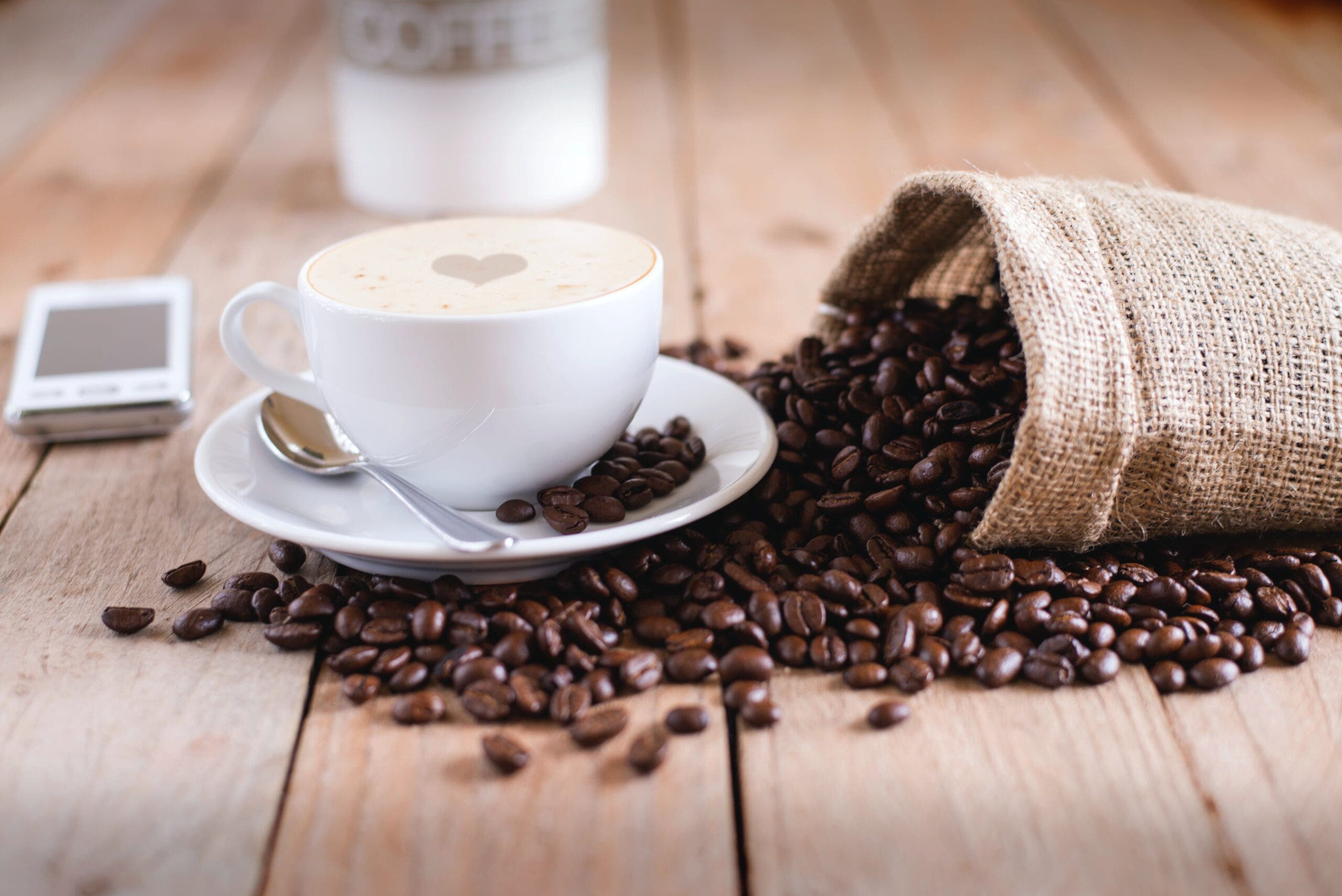Grinding coffee beans typically takes around 20 to 30 seconds. Grinding duration affects the final coffee flavor and consistency, so it is important to adjust it according to personal preference and brewing method.
Whether you prefer a coarse grind for French press or a fine grind for espresso, finding the perfect grind size is crucial for a delicious cup of coffee. By understanding the grind size and experimenting with different grinding times, you can achieve the desired flavor extraction and enhance your coffee experience.
We will explore the factors influencing coffee grind time and provide some tips on how to grind coffee beans effectively. So, let’s dive in and discover the secrets of grinding coffee beans to perfection!

Credit: nusacoffeecompany.com
Factors That Impact Grind Time
Factors such as the grind size, brewing method, and coffee bean quality all play a role in determining the optimal grind time for coffee beans. Experimentation is key to finding the perfect balance of grind time for your preferred strength and flavor.
Factors That Impact Grind Time
When it comes to preparing the perfect cup of coffee, grind time plays a crucial role in extracting the desired flavors and aromas. Grinding your coffee beans for the right amount of time is essential to achieve the ideal consistency for your brew. However, several factors influence the grind time, ensuring that each cup of java is uniquely tailored to your preferences. Let’s dive deeper into these factors and discover how coffee bean type, roast level, and grinder type impact the grind time.
Coffee Bean Type
The type of coffee bean you choose directly affects the grinding process. Different coffee bean varieties possess varying levels of density and moisture content, making grind times differ. Generally, there are two main types of coffee beans: Arabica and Robusta.
Arabica beans, known for their superior taste and complex flavor profiles, are denser compared to Robusta beans. Due to their density, Arabica beans require a relatively longer grind time to achieve the desired consistency. On the other hand, Robusta beans, which are often used in espresso blends for their extra caffeine kick, are less dense and require less time to grind.
Roast Level
The roast level of your coffee beans is a significant determinant in how long you should grind them. Coffee roasting alters the density and chemical composition of the beans, affecting the grinding process. There are various roast levels, including light, medium, and dark roasts.
Light roast beans, with their lighter color and more acidic taste, tend to be denser and require a longer grind time. Conversely, medium roast beans strike a balance between acidity and body, while dark roast beans have a reduced density due to longer roasting times.
Grinder Type
The type of grinder you use is another crucial factor that impacts grind time. There are two main types of grinders: blade grinders and burr grinders. Understanding their differences is vital to achieving the desired consistency in your ground coffee.
Blade grinders are more affordable and readily available; they feature a spinning blade that chops the coffee beans into inconsistently sized particles. Grind time with blade grinders is usually shorter since the blades quickly break down the beans. However, achieving a consistent grind size can be a challenge.
Burr grinders, on the other hand, offer greater control and precision. They utilize two rotating abrasive surfaces to crush the coffee beans consistently. Burr grinders allow for adjustable grind size settings, allowing you to determine the perfect grind time required for your specific brewing method.
In conclusion, factors such as coffee bean type, roast level, and grinder type significantly impact the grind time. Arabica beans, light roasts, and burr grinders generally require longer grinding durations. In contrast, Robusta beans, dark roasts, and blade grinders typically have shorter grind times. Understanding how these factors intertwine allows you to optimize your grind time for a delightful cup of coffee.
The Importance Of Grind Size
Grind size plays a crucial role in determining the flavor of your coffee. The length of time you grind coffee beans can greatly impact the taste and strength of your brew.
When it comes to brewing the perfect cup of coffee, one of the most crucial factors to consider is the grind size. The grind size you choose can significantly impact the flavor, aroma, and overall quality of your coffee. In this section, we will explore how grind size affects extraction and how to find the right grind size for your preferred brewing method.
How Grind Size Affects Extraction
Grind size plays a key role in the extraction process of coffee. Extraction refers to the process of dissolving the coffee’s soluble compounds, such as oils and flavors, into the water during brewing. Different grind sizes lead to different levels of extraction, ultimately affecting the taste of your coffee.
Here’s a breakdown of how grind size affects extraction:
- Coarse Grind: A coarse grind will result in larger coffee particles. When brewing with a coarse grind, the water will have less surface area to extract from, resulting in a weaker and less flavorful brew.
- Medium Grind: A medium grind strikes a balance between surface area and extraction. It is commonly used for drip coffee or pour-over methods. The medium grind allows for a well-balanced extraction, delivering a flavorful cup without excessive bitterness.
- Fine Grind: A fine grind creates smaller coffee particles, increasing the surface area available for extraction. When brewing with a fine grind, the water extracts more quickly and intensely, resulting in a bold and rich flavor profile. However, using an extremely fine grind may lead to over-extraction and a bitter taste.
Finding The Right Grind Size For Your Brewing Method
Choosing the correct grind size for your preferred brewing method is essential for achieving the best possible flavor. Here are some general guidelines:
| Brewing Method | Ideal Grind Size |
|---|---|
| French Press | Coarse |
| Chemex | Medium-Coarse |
| Aeropress | Medium-Fine |
| Espresso | Fine |
Keep in mind that these are just general recommendations, and you may need to adjust the grind size based on personal preference and the specific characteristics of your coffee beans.
Experiment with different grind sizes to find the sweet spot that produces the desired flavor profile and extraction rate. Remember that grind size is just one of many variables that can affect the taste of your coffee, so don’t be afraid to explore and tweak other factors such as water temperature and brewing time to achieve the perfect brew.
In conclusion, the grind size of your coffee beans plays a vital role in the extraction process and ultimately determines the flavor profile of your brew. Understanding how different grind sizes affect extraction and finding the right size for your preferred brewing method is the key to brewing a delicious cup of coffee every time.
Burr Grinders Vs Blade Grinders
Choosing the right grinder for your coffee beans can significantly affect the taste and quality of your brew. Two popular options available in the market are burr grinders and blade grinders. Each type has its own set of pros and cons that should be considered before making a decision. Let’s take a closer look at the characteristics of burr grinders and blade grinders to help you determine which one is the best fit for your coffee grinding needs.
Pros And Cons Of Burr Grinders
| Pros | Cons |
|---|---|
| Burr grinders offer precise and consistent grinding, resulting in a more uniform coffee particle size. | Burr grinders tend to be more expensive compared to blade grinders. |
| They generate less heat during the grinding process, preserving the coffee’s flavor and aroma. | Burr grinders typically have a slower grinding speed, so it may take longer to grind a large amount of coffee beans. |
| Burr grinders can be adjusted to accommodate different grind sizes, making them versatile for various brewing methods. | The size and weight of burr grinders can be bulkier, requiring more counter space. |
Pros And Cons Of Blade Grinders
| Pros | Cons |
|---|---|
| Blade grinders are generally more affordable and readily available. | They tend to produce an uneven grind size, resulting in an inconsistent extraction and potentially bitter-tasting coffee. |
| Blade grinders are compact and take up less space on your countertop. | The rapid spinning action of the blades can generate heat, potentially affecting the flavor profile of the coffee. |
| They are easy to use and suitable for beginners or occasional coffee drinkers. | Blade grinders may produce more coffee dust or fines due to their grinding mechanism. |
Which Grinder Is Best For Your Needs?
- If you prioritize grind consistency and are willing to invest in a higher-quality grinder, a burr grinder is the ideal choice for you.
- On the other hand, if you are on a budget or don’t mind a less precise grind, a blade grinder can still deliver acceptable results.
- Consider the brewing method you prefer. For example, if you enjoy espresso, a burr grinder’s ability to produce a fine and consistent grind is crucial.
- If you often brew in larger quantities or prefer coarser grinds for methods like French press or cold brew, a burr grinder’s adjustable settings will come in handy.
Ultimately, your choice between a burr grinder and a blade grinder depends on your priorities and the level of precision you desire. Both options can produce a decent cup of coffee, but if you’re serious about achieving the perfect grind for your preferred brewing method, investing in a burr grinder might be worth considering.
Recommended Grind Times For Different Brewing Methods
If you’re an avid coffee lover, you know that the grind size of your coffee beans greatly affects the flavor and aroma of your brew. Different brewing methods require different grind times to achieve the perfect balance. Let’s explore the recommended grind times for popular brewing methods: Aeropress, French press, Pour-over, and Espresso.
Aeropress
The Aeropress is a versatile brewing method that allows you to experiment with different grind sizes to achieve various flavor profiles. However, the general rule of thumb is to use a medium-fine grind. This grind size maximizes extraction while avoiding over-extraction.
Here’s a table to help you understand the recommended grind time for Aeropress:
| Grind Size | Grind Time |
|---|---|
| Medium-fine | 1-2 minutes |
French Press
French press brewing method is known for its full-bodied and bold flavor. To achieve this, a coarse grind size is recommended. The coarse grind allows for a slow extraction process, resulting in a rich and intense cup of coffee.
Take a look at the recommended grind time for French press:
| Grind Size | Grind Time |
|---|---|
| Coarse | 4-5 minutes |
Pour-over
Pour-over brewing method is all about balance and precision. The grind size should be medium to medium-fine, allowing for a controlled extraction process. This grind size brings out the nuanced flavors of the coffee beans without overpowering them.
| Grind Size | Grind Time |
|---|---|
| Medium to Medium-fine | 3-4 minutes |
Espresso
Espresso is a concentrated and bold brewing method that requires a fine grind size. The fine grind allows for quick extraction, resulting in a small but intense shot of coffee. It’s crucial to ensure consistency and avoid under or over-extraction by carefully controlling the grind time.
Check out the recommended grind time for espresso:
| Grind Size | Grind Time |
|---|---|
| Fine | 20-30 seconds |
Remember, these recommended grind times serve as a starting point. Coffee brewing is an art, and you may need to adjust the grind time based on your personal preferences and the characteristics of the coffee beans you’re using. Happy brewing!
Tips For Achieving Consistent Grind Size
When it comes to brewing a delicious cup of coffee, one of the most important factors is achieving a consistent grind size. The size of your coffee grounds can greatly impact the flavor and aroma of your brew. To help you achieve a consistent grind size every time, here are some essential tips.
Using A Scale For Accurate Measurements
Accurate measurement is crucial when it comes to grinding coffee beans. Using a scale can ensure consistency in the amount of coffee you are grinding. It allows you to measure the precise weight of your coffee beans and adjust accordingly. This helps in achieving the desired strength and flavor of your coffee.
Adjusting Grind Time Based On Desired Results
The grind time plays a significant role in determining the grind size. Whether you prefer a fine grind for espresso or a coarser grind for a French press, adjusting the grind time can help you achieve the desired results. It’s important to experiment with different grind times to find the perfect balance for your preferred brewing method.
Cleaning And Maintaining Your Grinder For Optimal Performance
A well-maintained grinder is essential for consistent grind size. Over time, coffee oils and residue can build up in your grinder, affecting the quality of your grind. Regularly cleaning your grinder ensures optimal performance and prevents any unwanted flavors from transferring to your coffee. Additionally, maintaining your grinder by sharpening or replacing blades can also contribute to achieving a consistent grind size.
In conclusion, achieving a consistent grind size is crucial for brewing a delicious cup of coffee. Using a scale for accurate measurements, adjusting grind time based on desired results, and cleaning and maintaining your grinder are all important tips to help you achieve consistency. By following these tips, you can elevate your coffee brewing experience and enjoy a consistently flavorful and aromatic cup of joe.
Frequently Asked Questions Of How Long Do You Grind Coffee Beans
Can You Grind Coffee Beans For Too Long?
Grinding coffee beans for too long can result in a bitter taste. Over-grinding releases more compounds, which affects the flavor.
What Is The Proper Way To Grind Coffee Beans?
To properly grind coffee beans, follow these steps: 1. Start with whole beans for fresher flavor. 2. Use a burr grinder for consistent particle size. 3. Adjust the grind size according to brewing method. 4. Grind only what you need for immediate use.
5. Store unused beans in an airtight container.
How Long Should You Ground Coffee?
Ground coffee should be brewed within 15 minutes of grinding to retain its freshness and flavor. Grinding coffee releases the oils and flavors, which begin to oxidize and degrade over time. For the best-tasting coffee, grind it just before brewing.
Should I Grind All My Coffee Beans At Once?
Grinding all your coffee beans at once is not recommended. Grinding coffee beans in small batches preserves freshness and flavor. Grinding releases oils that can quickly become stale, resulting in a less enjoyable cup of coffee. It’s best to grind beans just before brewing.
Conclusion
To ensure a flavorful and aromatic cup of coffee, it is crucial to understand the ideal grinding time for your beans. From coarse to fine, the grinding duration can significantly impact the taste and overall brewing process. By experimenting with your preferred brewing method, the desired strength, and the bean type, you can find the perfect balance.
Remember, a little adjustment in grinding time can go a long way in elevating your coffee experience. So, get your grinder ready, and embark on the journey of discovering your ideal coffee grind!





